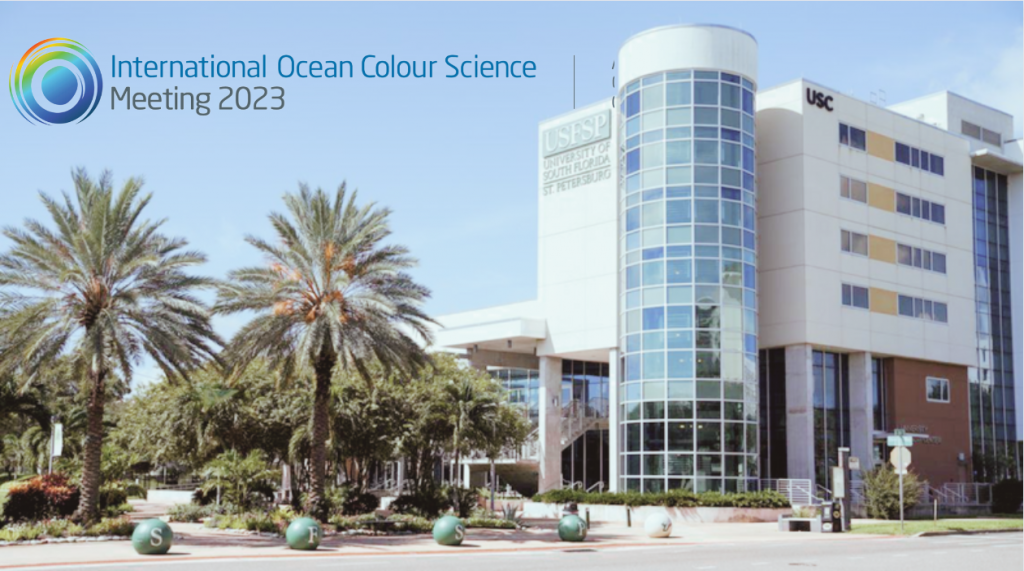We are proud to announce that both Benjamin Page and Ben Roberts-Pierel will be presenting at the fifth International Ocean Colour Science (IOCS) meeting being held in St. Petersburg, Florida on November 14-17, 2023. Alongside two other colleagues on the TSSC team at the Earth Resources Observation and Science (EROS) Center in Sioux Falls, SD, they will be presenting on “Identification and Implementation of Strategic Aquatic-based Atmospheric Correction in Preparation for Landsat Next Science Data Processing.”

The primary focus of the IOCS meetings is to serve as a venue for the ocean color community to communicate their views, ideas, concerns and issues with the satellite agencies. The program for the IOCS-2023 meeting will include invited keynote lectures, agency talks, breakout workshops, poster sessions and community Town Halls. It is anticipated training events and side meetings will also be scheduled.
The overarching theme for IOCS-2023 is “Impact and Value of Ocean Colour Observations in a Changing World: Water in all its Colours” with the overall goal of nurturing a strong global user community for ocean color science and applications, and fostering exchange between the ocean color research community and international space agencies with an interest in ocean color science.
The abstract for Ben & Ben’s presentation is below:
Landsat Next is planned as a constellation of three observatories sent into orbit on the same launch vehicle in the early 2030s. Landsat Next will provide improved spectral, spatial, and temporal sampling for monitoring of dynamic land and water surfaces such as vegetation, wildfire burns, agricultural crop residue, reservoirs and waterways, coastal and wetland regions, glaciers, snow, and dynamic ice sheets among other traditional Landsat science applications. Decades of research and development in the aquatic remote sensing domain has offered several pathways to optimally process space-borne multispectral and imaging spectroscopy data to retrieve water-leaving radiances for water quality monitoring and ocean color mapping applications. However, harmonizing atmospherically corrected image data between the conceived three instrument constellation including continuity with heritage Landsat missions will present unique calibration and validation challenges. This study focuses on identifying the critical steps in atmospheric correction and radiative transfer theory to better understand and quantify Landsat Next spectral sampling over aquatic targets. Existing imaging spectroscopy platforms like EnMAP, PRISMA, DESIS, and EMIT can provide supplementary and pre-planning insights into how candidate atmospheric correction algorithms are performing across target lakes and coastal zones when compared to current Landsat 8 and 9 observations. Lessons learned from these initial investigations and the published literature will assist NASA and USGS to better understand the potential capabilities and limitations of global aquatic pre-processing and mapping applications with Landsat Next science data.
Congratulations, Ben and Ben! Your contributions to the scientific community are invaluable, and this is well-deserved.
